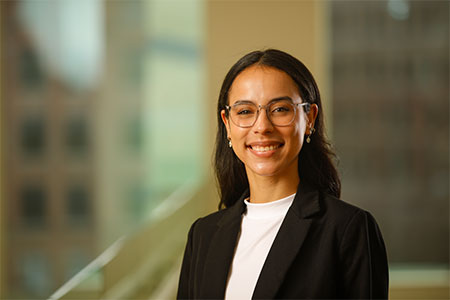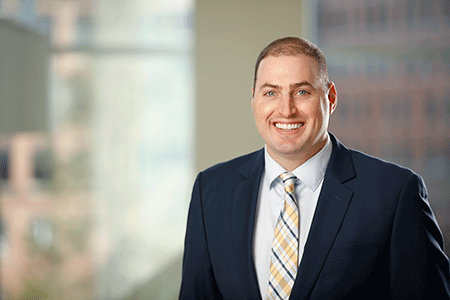Resident Perspectives
 Karolina Pellot, MD
Karolina Pellot, MD
Why did you select URMC for your residency?
I chose URMC for my residency because the residents and faculty here revealed a better side of neurosurgery to me. They created an environment where I wasn't afraid to make mistakes and emphasized learning from every experience and surgery. I saw URMC as a place where I could grow as a physician and shape my career according to my aspirations.
What is the best feature of your residency program?
The best feature of this residency program is the residents. They are inspiring individuals who love what they do. They always lend a helping hand and are willing to teach each other without hesitation or judgment. This creates an excellent learning environment, which is crucial for growth and development in this field.
What is your favorite thing(s) about Rochester?
Rochester stands out because of its people, forming a community that thrives on companionship. The city also offers a wealth of outdoor activities, a thriving cultural scene, and exceptional educational opportunities.
Can you identify a favorite or most impactful faculty member/mentor and why?
My favorite faculty member is Dr. Vates. He thrives on helping others and cares deeply about the residents in this program. He makes learning enjoyable and always takes the time to listen to people, integrating new ideas to continuously improve our residency program.
Where would you like to end up/career goals/aspirations?
My goal is to go back to Puerto Rico and help create a neurosurgery residency program to keep doctors on the island and enhance the medical community. To meet Puerto Rico's healthcare demands, I hope to establish a strong medical community through mentoring and advanced training.
Anything else you’d like to share?
I believe anyone aspiring to enter the field of neurosurgery should consider Rochester. It is an excellent place to grow and develop your career in every aspect. The people, both inside and outside the hospital, bring a warmth that makes it feel like a small town, while still offering the opportunities of an excellent academic institution.

Jonathan Stone, MD, MSe
Jonathan J. Stone, MD, MSe, is not new to the upstate New York region, having received his Doctor of Medicine at the State University of New York at Buffalo in 2010, and having completed his Neurosurgery residency at the University of Rochester.
As a resident, Jon demonstrated a penchant for the full range of cranial and spinal procedures, as well as open and endovascular surgery. He also developed a passion for translational technology innovation, beginning with the identification of a medical problem, developing an understanding of the root cause, envisioning device focused solutions, prototyping medical devices and bringing them to market.
His interest in biomedical engineering and medical device development led to a Master’s degree in Biomedical Engineering. His research interests led to peer reviewed publications addressing the surgical management of traumatic brain injury, carotid stenosis, trigeminal neuralgia and hydrocephalus and led him to develop a novel method of internal CSF diversion. Later in residency, Jon worked within the university’s Center for Medical Technology Innovation (CTI), focusing his work on surgical simulation and 3-D printing of replicated organs, using hydrogels cast in anatomically correct 3D printed molds. His innovative work in 3-D printing and surgical simulation as tools to advance resident education resulted in numerous peer reviewed publications and national platform presentations.
Following residency, Dr. Stone entered the Peripheral Nerve Surgery Fellowship at the Mayo Clinic under the direction of Dr. Robert Spinner, Chair of Neurosurgery and an internationally recognized peripheral nerve surgeon.
Returning to Rochester in August, 2018, Dr. Stone has already established a busy practice of complex peripheral nerve surgery, including repair of traumatic injuries and resection of benign and malignant nerve tumors, in addition to a busy practice of general Neurosurgery. His vision of developing a multi-disciplinary peripheral nerve program in collaboration with Orthopaedic Surgery and Plastic Surgery is already taking shape. His vision of advancing 3-D printing and surgical simulation as a tool not only to educate Neurosurgery residents but as a vehicle to simulate novel surgical approaches tailored to individual patients is taking shape in the form of a large laboratory outfitted with a state-of-the art 3-D printer and technical staff.
It is a pleasure to welcome Jon Stone, his wife Lindsey and his children Judah and Levi to the University of Rochester Neurosurgery family.